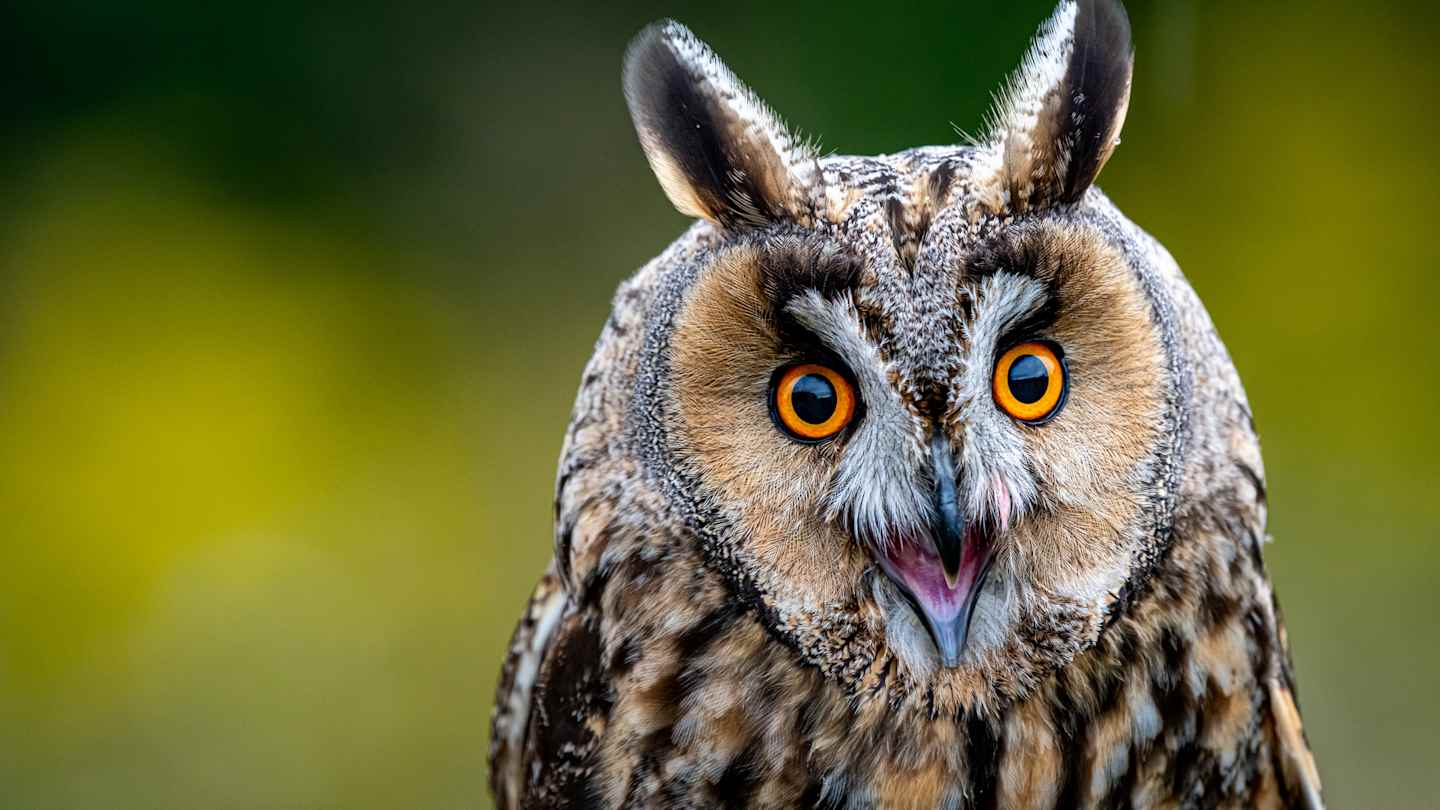Owls have always captured our imagination. They’re shrouded in mystery, flitting through the night with silent wings and piercing eyes. For centuries, they’ve been portrayed as wise creatures in mythology and literature, symbols of knowledge and insight. But are these nocturnal birds truly As Clever As Their Reputation suggests?
The truth is, When It Comes To Intelligence, are owls smart or dumb is a complex question. While owls possess incredible hunting abilities thanks to adaptations like exceptional hearing, camouflage, and unique eye structures, their problem-solving skills seem less advanced compared to other bird species like crows and parrots. It’s fascinating to consider that despite this, Some Owl Species, such as the burrowing owl, demonstrate primitive tool use by employing Animal Dung To Lure insects!
Perhaps our perception of owls as wise originates from ancient Greek mythology, where Athena, the goddess of wisdom, was often depicted with an owl by her side. Their large eyes, Granting Them Remarkable Night Vision, likely contributed to this image as well. However, even these impressive eyes have limitations and require other senses for close-Up Perception. So, while owls may not be the ultimate brainiacs compared to some of Their Feathered Counterparts, they’re certainly fascinating creatures with a unique blend of adaptations that allow them to thrive in their environment.
Owl Adaptations for Hunting
Owls are masters of the night, silently swooping down on unsuspecting prey with astonishing accuracy. But their success as hunters isn’t just about luck or instinct; it’s a result of some truly Remarkable Adaptations Honed Over Millennia.
One of their most impressive features is their exceptional hearing. Owls have asymmetrical ear openings, meaning one ear is positioned higher than the other. This allows them to pinpoint the location of sounds with incredible precision, even in complete darkness. Imagine trying to find a mouse rustling in leaves – that’S What Owls Do Every night! They can also rotate their heads almost 270 degrees, giving them an incredibly wide field of view and helping them locate Prey From All Angles.
 What Animals Eat Christmas Trees: Festive Finds for Wildlife
What Animals Eat Christmas Trees: Festive Finds for WildlifeOf course, being silent is essential for a Successful Hunt. Owls have specially designed feathers with serrated edges that minimize noise as They Fly. This stealthy approach allows them to get close to their prey without Being Detected. And speaking of feathers, owls are experts at camouflage, blending seamlessly into their surroundings thanks to their mottled brown and gray plumage. All these adaptations work together to make are owls smart hunters, perfectly equipped for life in the shadows.
Problem Solving Abilities Compared to Other Birds
While owls are undeniably skilled hunters, their problem-solving abilities seem to be less advanced compared to some other bird species. Think about a crow figuring out how to open a tricky latch or a parrot mimicking human speech – these are examples of complex cognitive skills that go beyond simply reacting to stimuli in the environment.
Studies have shown that birds like crows and parrots demonstrate impressive problem-Solving Abilities, Including Tool Use, Planning Ahead, and even understanding cause-and-Effect Relationships. While owls certainly display intelligence in Their Hunting Strategies, they haven’t been observed engaging in similar complex problem-Solving Tasks. This doesn’t mean owls lack intelligence altogether; it simply suggests that their cognitive strengths lie more in areas like Sensory Perception, Spatial Awareness, and specialized adaptations for hunting.
It’s important to remember that intelligence can manifest in diverse ways across Different Species. Just as humans excel in certain areas while lagging behind in others, the same applies to animals. Are owls dumb Compared To Some Other birds? It’s more accurate to say they have evolved unique cognitive strengths tailored To Their Specific Ecological Niche – the silent hunter of the night.
Tool Use in Some Owl Species
While owls are primarily known for Their Hunting Prowess, some species demonstrate a surprising ability To Use Tools, challenging the notion that they lack problem-Solving Skills. It turns out, Tool Use isn’t exclusive to primates and corvids – there’s evidence of it in the Avian World too!
The burrowing owl, for example, has been observed employing animal dung as a lure to attract insects. These owls will carefully place dung Near Their Burrows, creating an enticing scent that draws unsuspecting prey right into their waiting beaks. This behavior demonstrates a level of planning and understanding cause-and-Effect Relationships – the owls know the dung attracts insects, and they use this knowledge to Their Advantage.
While tool use in owls is less common than in other bird species, it highlights the diversity of cognitive abilities within the animal kingdom. It reminds us that intelligence takes many forms and can manifest in Unexpected Ways.
The Myth of the Wise Owl
The image of the wise owl is deeply ingrained in our cultural consciousness. From ancient Greek mythology, where Athena, the goddess of wisdom, was often depicted with an owl perched on her shoulder, to modern cartoons and literature, owls have long been associated with intelligence, knowledge, and insight.
This perception likely stems from a combination of factors. Their silent flight, large eyes that seem to pierce Through Darkness, and nocturnal habits all contribute to an aura of mystery and wisdom. But while owls are undoubtedly fascinating creatures with remarkable adaptations for hunting, Their Cognitive Abilities don’t necessarily align with the stereotype of the wise old owl. Perhaps are owls smart enough to understand the irony of being portrayed As Wise Beyond measure?
It’s important to remember that cultural perceptions often differ from scientific understanding. While owls may not be philosophical Deep Thinkers, they are highly successful predators perfectly Adapted To Their Ecological Niche. And in a way, their silent grace and efficient hunting techniques demonstrate a kind of wisdom All Their Own.
Vision and Perception
Owls are renowned for their exceptional Night Vision, thanks to a unique set of adaptations in their eyes. Their pupils can dilate incredibly wide, allowing them to capture as much light as possible in low-Light Conditions. Plus, they have a higher density of rod cells in their retinas compared To Humans, which are particularly sensitive to light and movement, perfect for spotting prey in the darkness.
But while their night vision is remarkable, it’S Not Without Limitations. Owls rely heavily on sound for close-Up Perception. Their large eyes provide excellent panoramic views, but they can’t focus on objects up close As Effectively As We Can. Think of it like a wide-Angle Lens – great for seeing the big picture, but not so good for zooming in on details.
This reliance on other senses explains why owls often tilt their heads While Observing Prey. By repositioning their ears, they create subtle differences in sound Arrival Times, allowing them to pinpoint the location and movement of their target with Incredible Accuracy.










